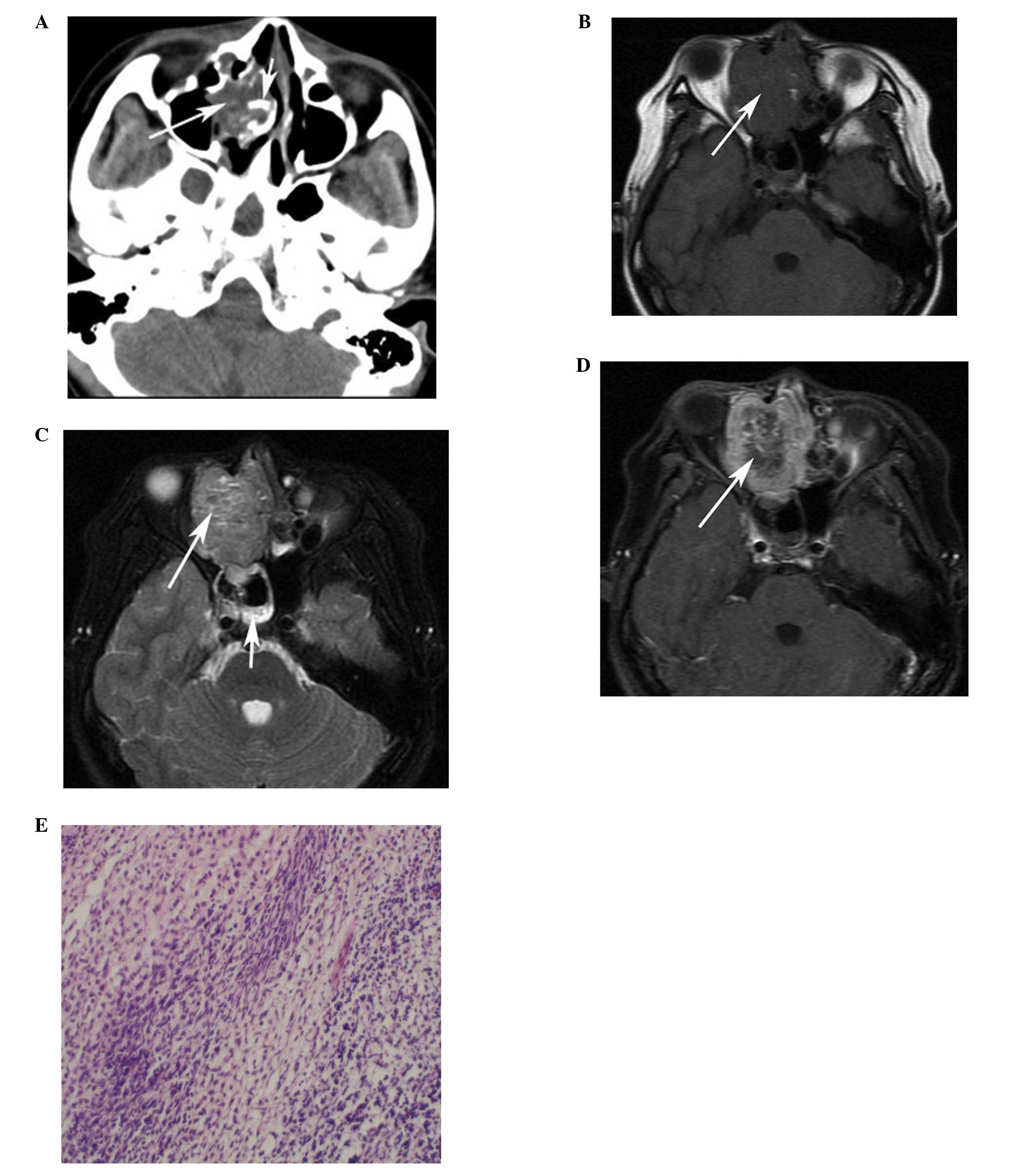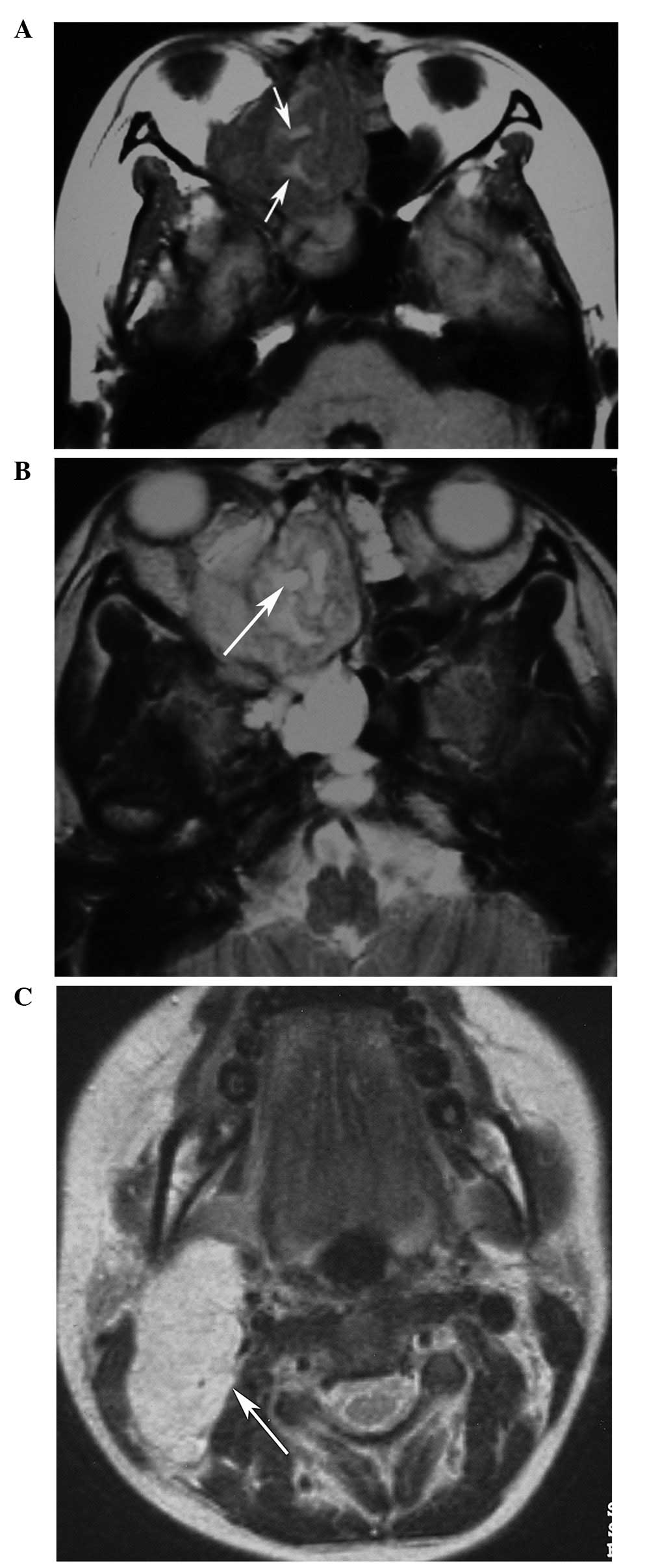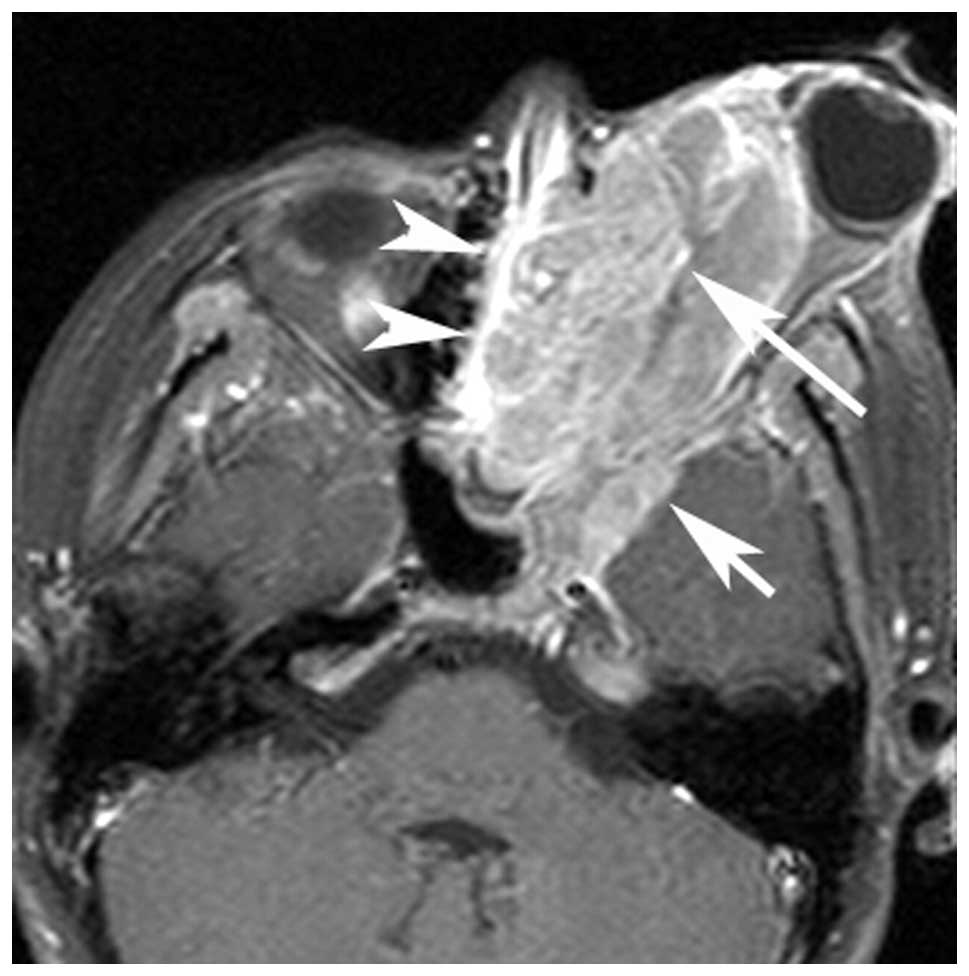|
1
|
Freling NJ, Merks JH, Saeed P, et al:
Imaging findings in craniofacial childhood rhabdomyosarcoma.
Pediatr Radiol. 40:1723–1738. 2010.
|
|
2
|
Karcioglu ZA, Hadjistilianou D, Rozans M
and DeFrancesco S: Orbital rhabdomyosarcoma. Cancer Control.
11:328–333. 2004.
|
|
3
|
McCarville MB, Spunt SL and Pappo AS:
Rhabdomyosarcoma in pediatric patients: the good, the bad, and the
unusual. AJR Am J Roentgenol. 176:1563–1569. 2001.
|
|
4
|
Allen SD, Moskovic EC, Fisher C and Thomas
JM: Adult rhabdomyosarcoma: cross-sectional imaging findings
including histopathologic correlation. AJR Am J Roentgenol.
189:371–377. 2007.
|
|
5
|
Franco A, Lewis KN and Lee JR: Pediatric
rhabdomyosarcoma at presentation: can cross-sectional imaging
findings predict pathologic tumor subtype? Eur J Radiol.
80:e446–e450. 2011.
|
|
6
|
Hagiwara A, Inoue Y, Nakayama T, et al:
The ‘botryoid sign’: a characteristic feature of rhabdomyosarcomas
in the head and neck. Neuroradiology. 43:331–335. 2001.
|
|
7
|
Lee JH, Lee MS, Lee BH, et al:
Rhabdomyosarcoma of the head and neck in adults: MR and CT
findings. AJNR Am J Neuroradiol. 17:1923–1928. 1996.
|
|
8
|
LIoyd C and McHugh K: The role of
radiology in head and neck tumours in children. Cancer Imaging.
10:49–61. 2010.
|
|
9
|
Stevens MC, Rey A, Bouvet N, et al:
Treatment of nonmetastatic rhabdomyosarcoma in childhood and
adolescence: third study of the International Society of Paediatric
Oncology - SIOP Malignant Mesenchymal Tumor 89. J Clin Oncol.
23:2618–2628. 2005.
|
|
10
|
Rodjan F, Graaf PD, Brisse HJ, et al:
Second cranio-facial malignancies in hereditary retinoblastoma
survivors previously treated with radiation therapy: Clinic and
radiologic characteristics and survival outcomes. Eur J Cancer.
49:1939–1947. 2013.
|
|
11
|
Gufler H, Laubenberger J, Gerling J,
Nesbitt E, Kommerell G and Langer M: MRI of lymphomas of the orbits
and the paranasal sinuses. J Comput Assist Tomogr. 21:887–891.
1997.
|
|
12
|
Yabuuchi H, Fukuya T, Murayama S, et al:
CT and MR features of nasopharyngeal carcinoma in children and
young adults. Clin Radiol. 57:205–210. 2002.
|
|
13
|
Yu T, Xu YK, Li L, et al:
Esthesioneuroblastoma methods of intracranial extension: CT and MR
imaging findings. Neuroradiology. 51:841–850. 2009.
|
|
14
|
Wurm J, Constantinidis J, Grabenbauer GG
and Iro H: Rhabdomyosarcomas of the nose and paranasal sinuses:
treatment results in 15 cases. Otolaryngology Head Neck Surg.
133:42–50. 2005.
|
|
15
|
Healy JN and Borg MF: Paediatric
nasopharyngeal rhabdomyosarcoma: A case series and literature
review. J Med Imaging Radiat Oncol. 54:388–394. 2010.
|
|
16
|
Moon HS, Kwon SW and Lee JH: A case of
alveolar rhabdomyosarcoma of the ethmoid sinus invading the orbit
in an adult. Korean J Ophthalmol. 20:70–75. 2006.
|
|
17
|
Little DJ, Ballo MT, Zagars GK, et al:
Adult rhabdomyosarcoma: outcome following multimodality treatment.
Cancer. 95:377–388. 2002.
|
|
18
|
McHugh K and Boothroyd AE: The role of
radiology in childhood rhabdomyosarcoma. Clin Radiol. 54:2–10.
1999.
|
|
19
|
Kim EE, Valenzuela RF, Kumar AJ, Raney RB
and Eftekari F: Imaging and clinical spectrum of rhabdomyosarcoma
in children. Clin Imaging. 24:257–262. 2000.
|
|
20
|
Crist W, Gehan EA, Ragab AH, et al: The
third intergroup rhabdomyosarcoma study. J Clin Oncol. 13:610–630.
1995.
|
|
21
|
Chu Y, Liu HG and Yu ZK: Patterns and
incidence of sinonasal malignancy with orbital invasion. Chin Med J
(Engl). 125:1638–1642. 2012.
|
|
22
|
Tateishi U, Hosono A, Makimoto A, et al:
Comparative study of FDG PET/CT and conventional imaging in the
staging of rhabdomyosarcoma. Ann Nucl Med. 23:155–161. 2009.
|
|
23
|
Nakamura K, Uehara S, Omagari J, et al:
Primary non-Hodgkin lymphoma of the sinonasal cavities: correlation
of CT evalution with clinical outcome. Radiology. 204:431–435.
1997.
|
|
24
|
Madani G, Beale TJ and Lund VJ: Imaging of
sinonasal tumors. Semin Ultrasound CT MR. 30:25–38. 2009.
|
|
25
|
Holsinger FC, Hafemeister AC, Hicks MJ,
Sulek M, Huh WW and Friedman EM: Differential diagnosis of
pediatric tumors of the nasal cavity and paranasal sinuses: a
45-year multi-institutional review. Ear Nose Throat J. 89:534–540.
2010.
|
|
26
|
Saboo SS, Krajewski KM, Zukotynski K,
Howard S, Jagannathan JP, Hornick JL and Ramaiya N: Imaging
features of primary and secondary adult rhabdomyosarcoma. AJR Am J
Roentgenol. 199:W694–W703. 2012.
|

















